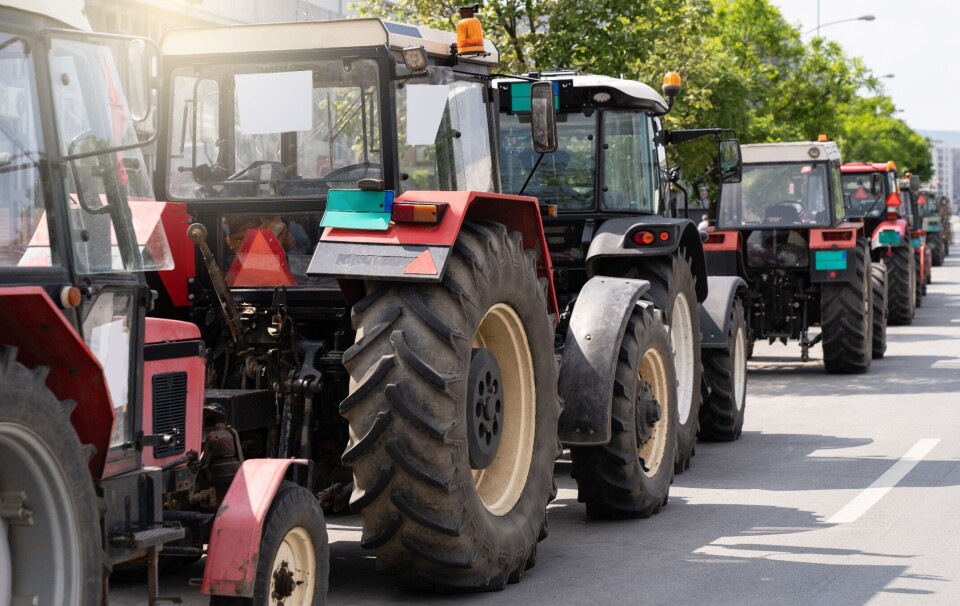-
Warnings issued over connecting to public WiFi networks in France
Lack of encryption and risk of connecting to ‘fake networks’ leave users at risk of hacking attempts
-
Winegrowers outraged by €0.01 bottle of wine in French supermarket
Lidl claims labelling error but local farmers’ union says it threatens local production
-
Cybercrime rises in France: see some free resources to fight it
Attacks are becoming more numerous, targeted and difficult to detect
Flock of robot sheep cuts grass in French vineyards
Sheep are widely recognised as the best way to keep lawns trim but a French company is taking this a step further by producing a flock of grass-munching robots.

Guided by a “shepherd” with a smartphone, the devices are being used, in particular, to cut the grass between vine trunks in vineyards. Vines give up to 20% more fruit if grass around their trunks is removed.
The robots were developed over a period of eight years and are packed with new technology to provide an alternative to the use of grass-killers, such as glyphosate, which is in the process of being banned amid possible cancer concerns.
One of Vitirover’s co-founders, Arnaud de la Fouchardière, said tests have shown that the system has the same effect as removing all the grass using herbicide.
The robots cut grass around the trunks to a 4cm height during the growing season. “We have been testing extensively, including with some of the biggest names in the Bordeaux region and in Champagne,” said Mr de la Fouchardière.
“They have not seen any significant drop in production and love being freed from the task of clearing in between the trunks of the vines, whether they did it mechanically or with herbicides.” Co-founder Xavier David-Beaulieu built the first prototype after taking over the family’s vineyard and winery, Château Coutet at Saint-Emilion.
He realised there was a huge potential market, with large vineyards having about one tractor and driver for every 10 hectares of vines and a significant proportion of the tractor’s time is spent keeping the grass down.
“Wine-makers want to concentrate on making the best wine possible but instead spend more time as tractor and lawnmower mechanics,” said Mr de la Fouchardière. “They are not interested in learning the ins and outs of our sophisticated machines, which is why we decided that the best way to commercialise them is to offer them as a vineyard grass-cutting service.”
The machines are 75cm long, 39cm wide and weigh 20kg.
They have a solar panel on the back, four wheels – each driven by its own motor – three cutters, and guidance systems that allow them to cut to within 1cm of a vine trunk without touching it.
“Vineyards are incredibly complex places for robots, with at least 7,000 obstacles per hectare, ground that is often quite rough, with slopes and stones to deal with,” said Mr de la Fouchardière. “It was a huge challenge.”
When a customer signs up with the company, the robots are programmed with the co-ordinates of the parcel where they will work. In large vineyards, tens of robots will be used.
Each robot is assigned a “shepherd” who receives details of how it is working on their smartphone.
“If it gets stuck, for example, it sends out a message to the shepherd, who will be able to see what the problem is, and suggest a manoeuvre to get free, via the smartphone.
“Commands can also be sent to clean the cutters, and to carry out other maintenance tasks remotely.”
It is expected that each shepherd, who will be a company employee, will have up to 50 Vitirovers in a flock. The robots usually run all the time during daylight hours, at a speed of 300 metres per hour, and, if the battery has been able to charge during the day, for a while at night as well.
During spells of cloudy weather, when there is not enough light for the solar panel to be effective, it might stop, sending a message to the shepherd, who will change the battery.
Prices depend on the density of vines, and vary between €1,500 and €3,000 a year, which Mr de la Fouchardière says compares well with the price of clearing using a tractor.
As well as vineyards, he said the robots have been successfully tested in electricity substations, alongside railway lines and in graveyards – all places where glyphosate has been used extensively.
Numerous prizes for innovation have been awarded to the company, based in Saint-Emilion in the Gironde, even before commercialisation began.
A factory to start manufacturing the robots is planned in the Nouvelle Aquitaine region, which will be based on Factory of the Future principles, where robots are used to make robots.
“For me, it is very exciting to be in this situation, where high technology is applied to solve problems and, by doing so, helps improve the environment,” said Mr de la Fouchardière.
























